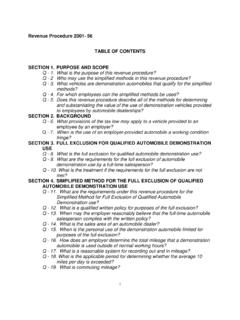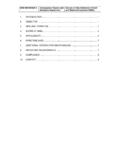Transcription of The European Union´s new Regulation on biocides - PAN …
1 T h e E u r o p e a n U n i o n 's n e w R e g u l a t i o n on biocides European Union law on biocidal products has been revised. The changes apply to products such as disinfectants, household pesticides, or wood preservatives and to articles treated with biocidal products. From the perspective of environmental and consumer protection, the new Regulation brings positive reforms with respect to authorising products and making them available on the market but a harmonised EU framework for the sustainable use of biocides that reduces risks is still lacking. A healthy world for all. Protect humanity and the environment from pesticides. Promote alternatives. Current European legislation on biocides Biocidal products Biocidal products combat harmful or unwanted organisms, and because of their properties and uses may pose a threat to human health, animals, and are intended to destroy, deter, render harmless, prevent the action of, or otherwise the environment.
2 Exert a controlling effect on any harmful Since 1998, making biocidal products such as household pesticides or disinfec- organism by any means other than mere tants available on the market has been subject to a European Union (EU) Directive physical or mechanical action. consist of, contain, or generate one or (98/8/EC). Work on revising this legislation has been ongoing since 2009. The more active substances. A treated article current Directive established for the first time an approval procedure for biocides with a primary biocidal function is also con- and national product authorisation processes that make mutual recognition of sidered a biocidal product. authorisation possible.
3 However, the Directive did not establish a harmonized are pest control products such as roden- framework for use of biocidal products that set, for example, standards for pro- ticides or insecticides, disinfectants, preser- vatives, substances for preserving masonry fessional users or for integrated pest management. Reviewing the approximately or wood, antifouling products for ships, etc. 350 active biocidal substances notified so far will take at least until May 2014, presumably longer. Most of the biocidal products currently on the market have not been authorised according to procedures as defined in the current Directive. In Germany alone, more than 35 000 biocidal products fall under the Directive;1.
4 The total number in the EU is estimated to be about 50 000. Improvements and shortcomings in the Regulation from the perspective of environmental and consumer protection Hazard approach bans active hazardous substances will be promoted or or preventing the occurance of harmful or- substances of high concern such products as anticoagulants in rodenti- ganisms. New additions to the criteria cata- The new biocide Regulation prohibits the use cides that are toxic for reproduction or car- logue for substitution include, for example, of active biocidal substances with extremely cinogenic wood preservatives such as creo- substances classified as respiratory sensiti- hazardous profiles in biocidal products (see sote will remain in use on the basis of these sers, but other adverse health aspects such the box on the right for exclusion criteria).
5 Derogations. The Regulation stipulates that as developmental neurotoxic properties are This approach is in agreement with the revi- the derogations outlined above will only be missing. Whereas less hazardous subs- sion of the Pesticide Regulation enacted in applicable to member states that implement tances must be assessed in order to renew 2009 and strengthens considerably the pre- risk mitigation measures. However, products approval every fifteen years, the Regulation cautionary principle of preventing adverse ef- that are treated with exclusion candidates specifies that substitution candidates are fects from hazardous substances. Especially ( , wood treated with creosote) and used subject to reassessment every seven years.
6 The fact that environmental properties are in one member state on the basis of a dero- now taken into account (PBT, vPvB) is an im- gation are not explicitly banned from being Introduction of a new Union portant improvement; these elements were sold throughout the EU market, according to authorisation missing in the EU Commission's first draft. the provisions of the Regulation . Biocide manufacturers, in particular, have called for simplified and expedited authori- and has been watered sation procedures for their products for the down by derogations entire European market. The new Regulation Extensive derogations limit the effect of the includes the stepwise introduction of Union exclusion procedure.
7 Member states can au- authorisation by 2020. EU authorisation is thorise active substances if the exposure to not possible for products containing exclu- humans or the environment is negligible, or if sion candidates. Whether Union authori- evidence is provided showing that the biocide sation will be introduced for rodenticides, is essential to prevent or to control a serious products used to combat birds, fish or other danger, or it is shown that non-approval of the vertebrates, or for antifouling products will active substance would have disproportionate be decided based on a report that the EU. negative impacts for society. Approval is for a Step-wise substitution should Commission must present by 31 December five-year period at most but can be renewed.
8 Be the goal 2017. In Germany, toxins for use against These derogations by far exceed those that Other active substances that have been rec- fish, birds and higher mammals are already otherwise apply to hazardous pesticides and ognized as problematic should be labelled prohibited in the interests of animal welfare. are also not tied to the development of man- substitution candidates and gradually re- Union authorisation procedures will now datory substitution plans. placed, based on comparative assessment, become the jurisdiction of the European It is therefore questionable whether serious with less hazardous alternative substances Chemicals Agency (ECHA). Member states efforts to develop alternatives to these highly or with non-chemical methods of combating can bring an appeal against authorisation Pestizid Aktions-Netzwerk (PAN Germany).
9 Re a s o n s f o r t h e r ev i s i o n When the current EU Directive went into force in 1998, it was already being Exclusion criteria for hazardous, criticized as too complicated and inadequate in some respects. Demands active biocidal substances for simpler and quicker authorisation procedures and, EU-wide authorisation CMR substances: carcinogenic, mutagenic, came especially from industry. Authorities from the member states called for or toxic for reproduction ( and 1b*). uniform testing and evaluation during authorisation and consumer and environ- PBT substances: persistent, bio-accumula- mental non-governmental organisations (NGOs) criticized, among other things, tive, and toxic*.
10 VPvB substances: very persistent and very the lack of rules on articles treated with biocides and on biocide use phases. bio-accumulative*. The EU Commission presented a draft revision in June 2009. Endocrine-disruptive substances: Criteria PAN Germany has participated with other stakeholders in negotiating revisions are to be proposed by the EU Commission by 13 December 2013; in the interim: carci- to the legislation and together with other NGOs recommended changes that nogenic and toxic for reproduction (both Cat. enhance protection of the environment and consumers. The final proposal was 2*) or toxic for reproduction (Cat. 2*) and passed by the EU Parliament in a second reading on 19 January 2012.










